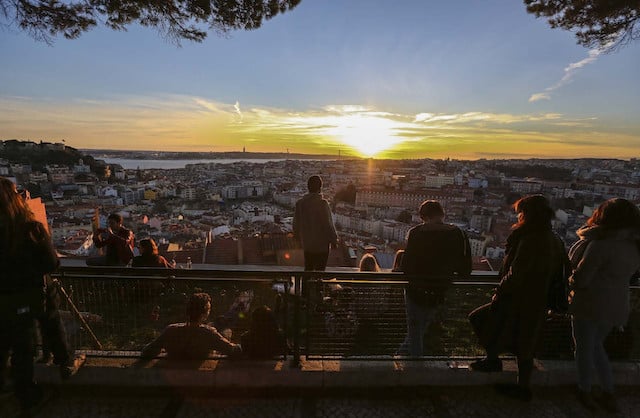Lisbon is a gem of a city that welcomes millions of tourists each year. But almost all of them make the same mistake of visiting the commonly suggested places that are mainstream and overcrowded. If you are visiting Lisbon to experience authentic Portuguese vibes and explore the city like a local, you have to make space for some secret spots of Lisbon in your itinerary.Here we try to show you a little list of Lisbon Hidden gems Undiscovered!
Miradouro de Nossa Senhora do Monte
One of the most beautiful viewpoints for us was Miradouro de Nossa Senhora do Monte. But most of the highest points on the hills are beautiful to admire the landscape over the Rio Douro.
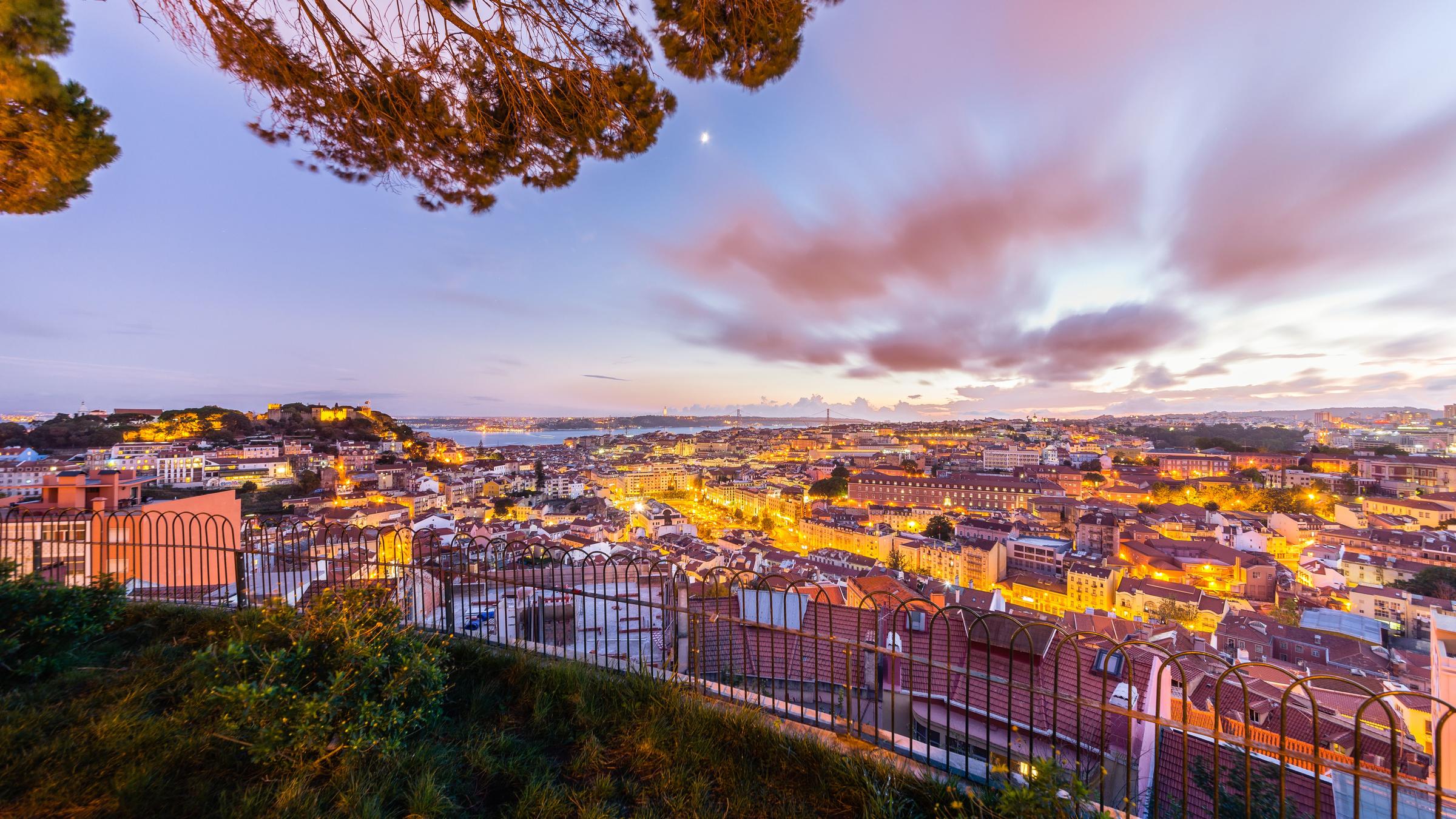
For those who might don’t know, Miradouro means viewpoint so if you see any sign with this word, it means that somewhere there is a lovely point of view of the city.
The Miradouro de Nossa Senhora it’s a bit hard to reach, so make sure your legs are ready for it. Bear this in your mind: the view is worth the exercise.
From the top, you can see everything, from the river to Baixa district and the beautiful castle.
Casa do Alentejo
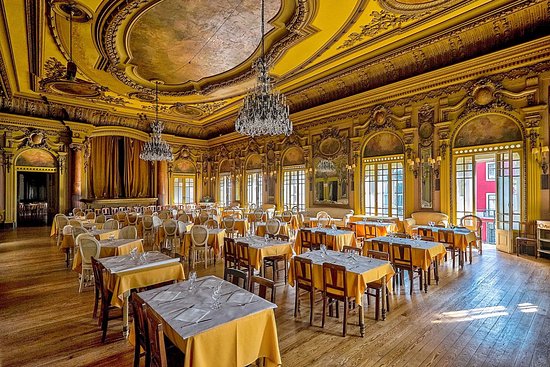
This restaurant is located inside an amazing palace that dates back to the 17th century. The jaw-dropping dining rooms, lit by chandeliers and decorated in ornately gilded work, add to an already grand ambience, and azulejo tiles give it a touch of unique Portuguese tradition. In addition to the dining room, there is a relaxed tavern meant for casual parties, a courtyard and an elaborate waiting room. The menu reflects traditional recipes, many stemming from rural Alentejo, and the prices are very fair, especially considering the surroundings. Tucked away on a side street east of lower Avenida da Liberdade, it is an easy location to miss, but one well worth finding.
LX Factory
In 1846, a fabric production plant (Companhia de Fiação e Tecidos Lisbonenses) was created in Alcântara, Lisbon. The industrial complex spanned over a total of 23.000 m2 and was one of the most important undertakings the city had so far seen. Fifty years later, the company decides to move and, in its place, a succession of businesses such as industrial typographies took advantage of the unique location and facilities.

Forward to the late 20th century and the location was an abandoned, run-down and decrepit inner-city area that desperately needed a makeover.
A private investor decides to take on the challenge of creating something new out of almost one hundred years of history and the rest, as they say, is indeed history. Today, the space is home to more than 200 businesses ranging from cafés, restaurants, design houses, show-rooms, shops, offices, commercial spaces to other projects that link directly to the space’s unique cultural and artistic standing.
Calouste Gulbenkian
Despite having masterpieces from Andy Warhol to Claude Monet, the Calouste Gulbenkian Museum is not often included on the top list of tourists. This museum gathers art sourced to everything from ancient Egypt to contemporary Portuguese artists.

Apart from visiting the museum, you should save a couple of hours to enjoy a sunny afternoon in its garden. The chilled atmosphere will make you feel like you’re outside of Lisbon
Casa da Índia
Bairro Alto is definitely one of the places in Lisbon that you need to see. But, after you enjoy a few Imperiais (local name for a pint), you’ll need to eat something.
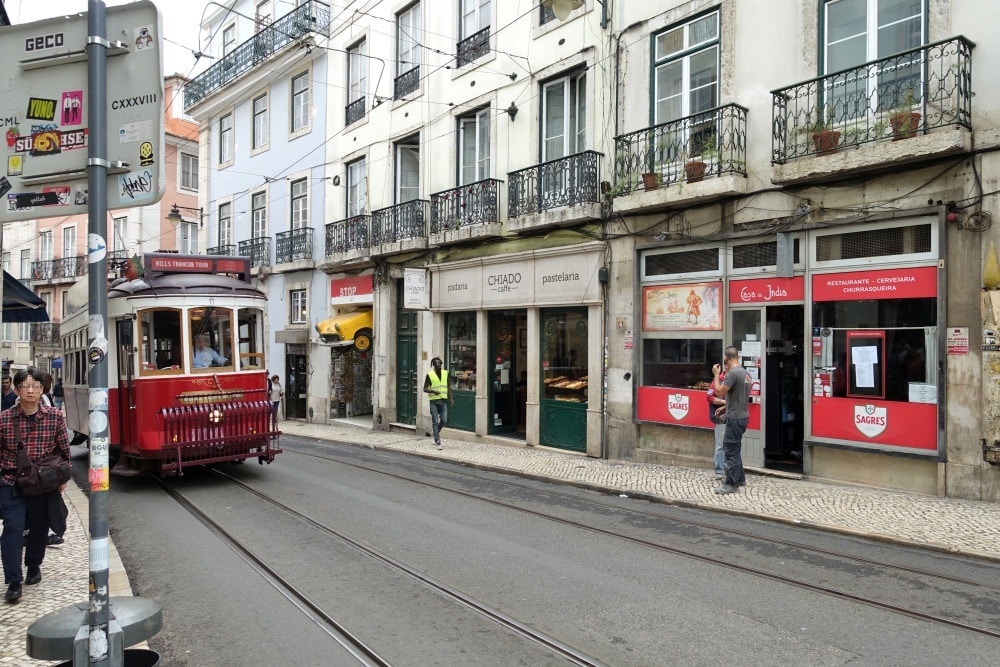
Casa da Índia is not an Indian restaurant. Actually, it’s a traditional Portuguese place opened until late hours.
Once you get there, you’ll realize that it’s all about the food. The place is loud, busy, and you might have to wait to be seated. But don’t give up! Every bite will be worth the wait
National Tile Museum
At first blush, you might think a tile museum sounds exceedingly dull. But Lisbon’s National Tile Museum, the Museo Nacional do Azulejo, is a revelation
It boasts a dramatic setting, housed in an ancient 16th century convent, the Madre de Deus, built in the Manueline style. The convent church is a glittery Baroque showstopper with a Rococo altarpiece.
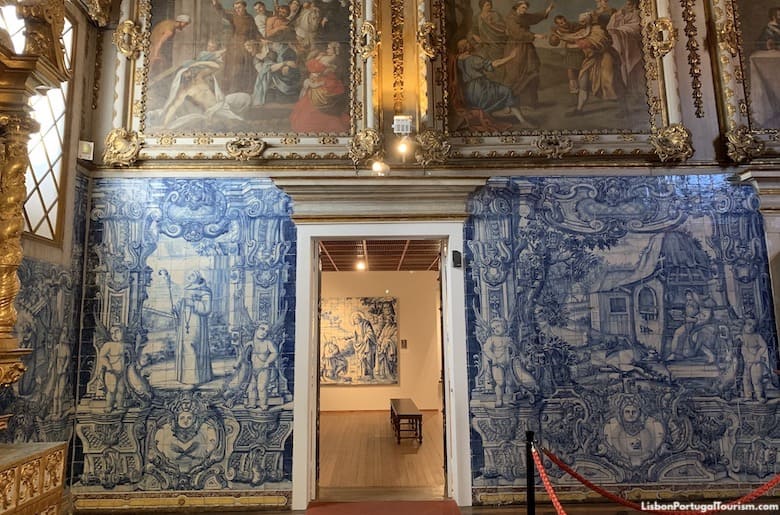
The convent cloister is less showy but more serenely beautiful. Blue and white azulejo tiles panels are everywhere.
Inside this hidden gem museum, every inch is covered with azulejos. The exhibits are arranged chronologically from the Moorish-influenced tiles of the 16th century to abstract designs of the 20th century.
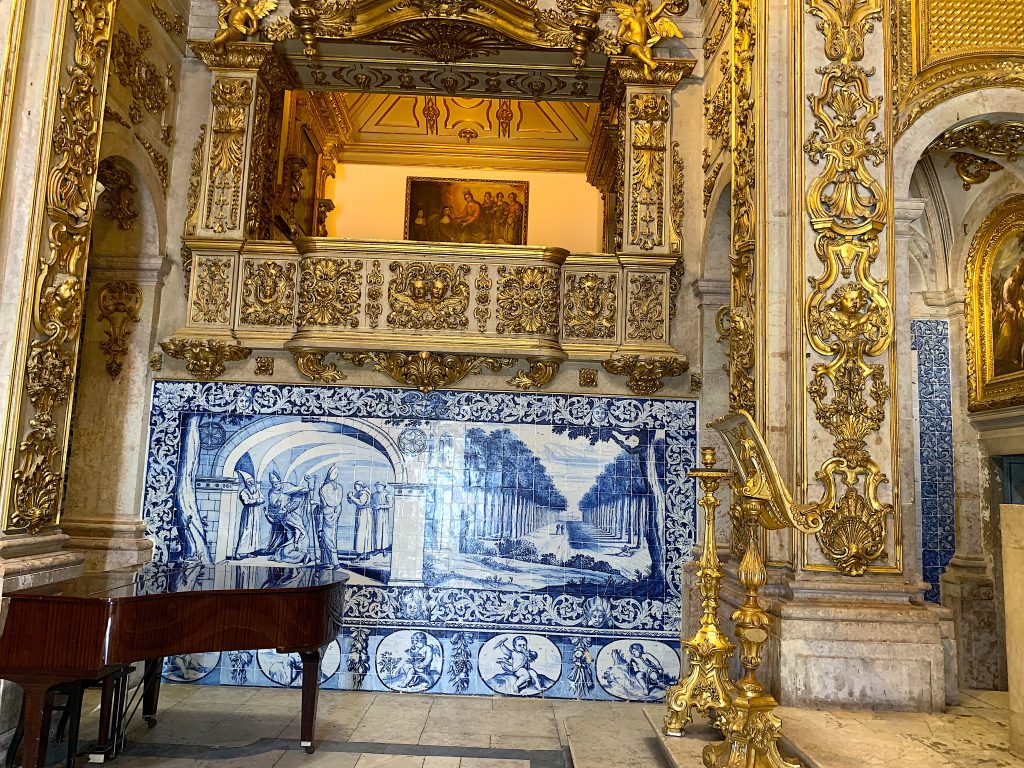
The piece de resistance is a 75 foot long panel depicting Lisbon as it existed before the great earthquake of 1755The museum’s still a relatively secret hidden gem in because it’s outside central Lisbon. Most visitors are too busy in Alfama, Belem, or Sintra. This museum is often left off the must see list, and, trust me, it shouldn’t be
Palace of the Marquesses of Fronteir
The Fronteira Palace, also known as the Palace of the Marquesses of Fronteira, is the privately owned property, but parts of it are opened to visits, and only on a tight schedule. The castle is worth visiting by force of the fact that, next to the Tile Museum, it is one of the best places where splendid tile panels (inside and outside the castle, the garden included, rendering religious episodes, battlefield sets and hunting scenes) can be admired in Lisbon. The edifice is located in Benfica and while surrounded by an exquisitely landscaped garden, it is an oasis of greenery and tranquility.
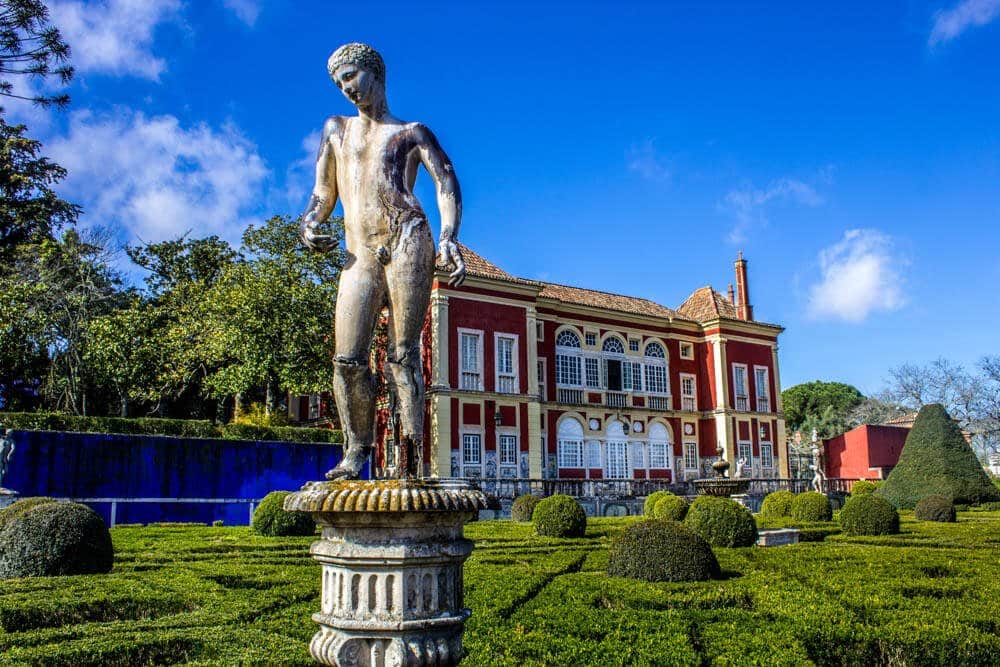
The palace was built in 1640 for the first Marquis of Fronteira, Dom Joao de Mascarenhas (bestowed with the title of Marquis of Fronteira for his allegiance to King Pedro II of Portugal), in order to serve as hunting pavilion. At present, the oldest part of the castle complex refers to a 16th century chapel, but inside the castle, visitors can admire the stunning Battle Room (which stands out by the splendid tile panels due to which the room has been dubbed the Sistine Chapel of Tile Panels), as well as the Dining Room (with highlights like the paintings signed by Domingos Antonio de Sequeira).
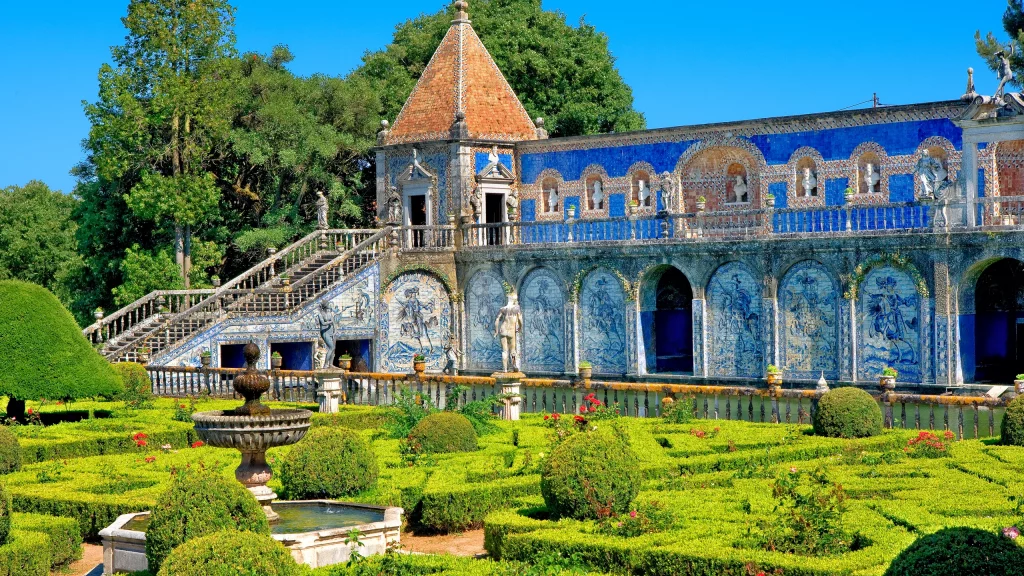
Outside the castle, visitors can search out the carefully arranged garden, which fills a surface of some 5.5 hectares, offering the spectacular scenery of the ingeniously cut hedges, tile panels and a statuary where sculptural works rendering the Kings of Portugal (chiefly, busts) are displayed. Given, as said, the castle is private property, only guided visits are available.
Quinta dos Azulejos Garden
The 18th century Quinta dos Azulejos Garden is a true Lisbon secret hidden gem. It’s so hidden that no one’s there. And it’s not in any guide books.

You’d have to dig deep for Quinta to be on your Lisbon radar. As a result, the garden’s an oasis of peace and tranquility, with the heady scent of jasmine wafting romantically in the air as an added bonus.
Quinta dos Azulejos was built for António Colaço Torres. The garden was designed in the Moorish tradition. It’s therefore inward looking with a central courtyard.
In the golden age of azulejos, the tiling at Quinta took on three dimensions. It engulfed pillars, columns, arches, benches, and other architectural surfaces.
The tiles are transformed into actual architecture. They depict elaborate scenes of chivalry, hunting, and religion.
The garden is owned by a small college, Colegio Manuel Bernardes. You can visit free of charge. But you need permission to enter.
